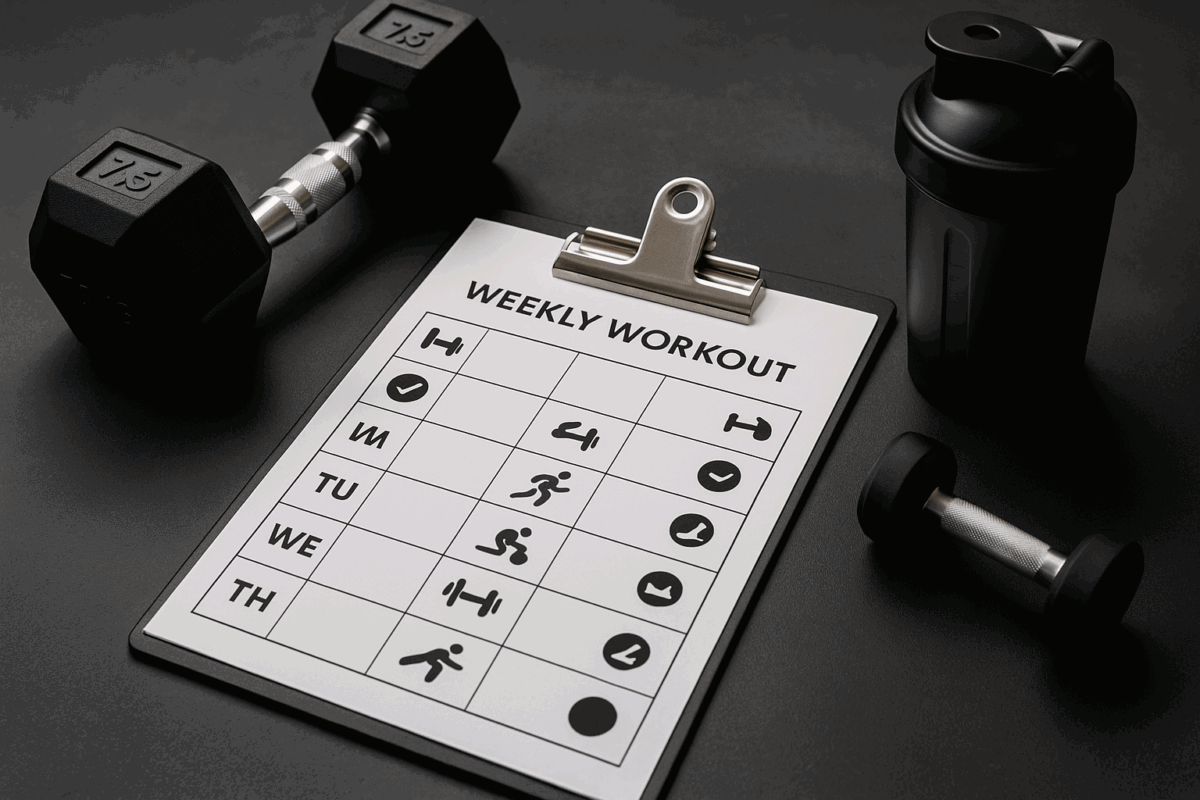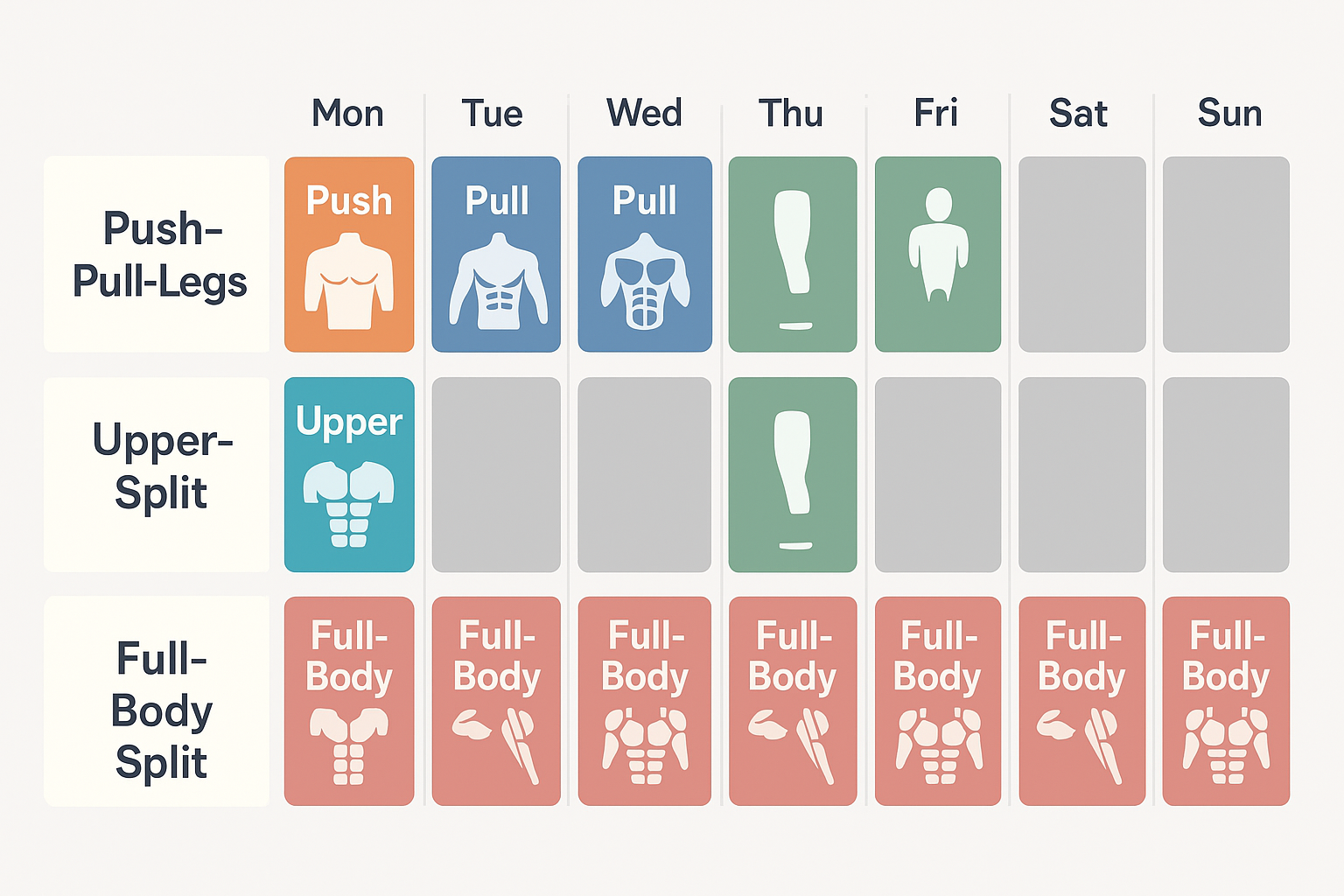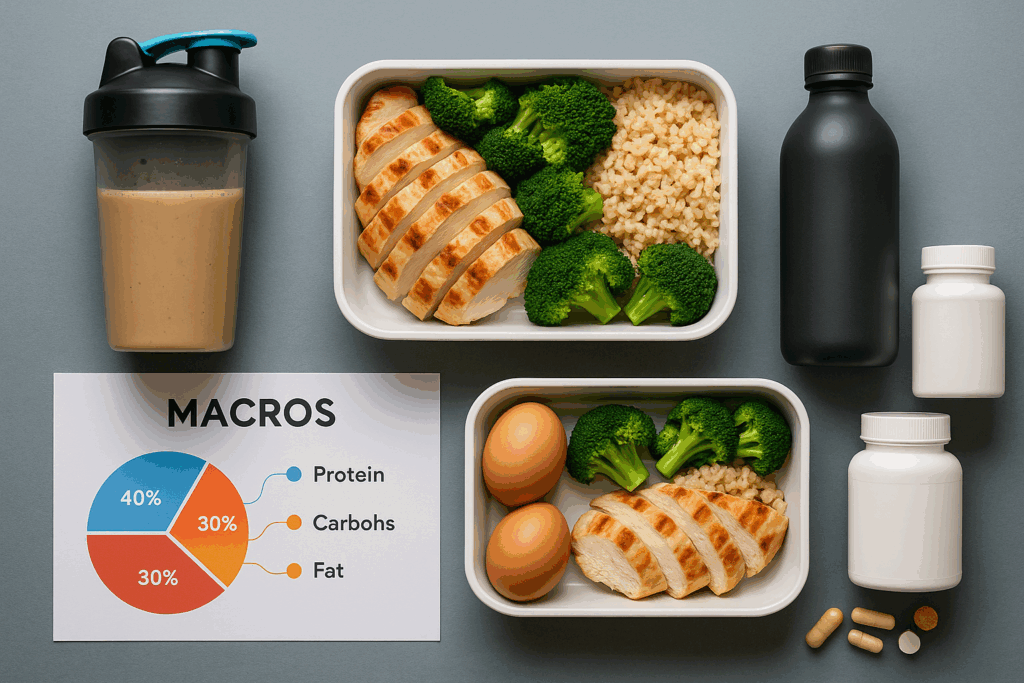Introduction: Embracing Strength to Transform Your Life
For many men, the decision to go to the gym marks the beginning of a journey toward better health, enhanced physical appearance, and increased mental resilience. The gym is not merely a space filled with weights and machines; it is a transformative arena where discipline, dedication, and determination converge to create lasting change. Whether you are a beginner looking to build a foundation or someone returning after a long hiatus, understanding how to approach strength training with purpose can be the catalyst for a complete lifestyle upgrade. This article offers a powerful, evidence-based guide to help you develop a strength plan that is both effective and sustainable, with specific attention to how often you should go to the gym and what types of training yield optimal results. From demystifying workout frequencies to mastering recovery and nutrition, this guide will empower you with the knowledge needed to achieve and maintain your fitness goals.
You may also like: The Ultimate 30-Day Workout Plan for Men Working Out in the Gym: Proven Full Body Strength Exercises to Maximize Results
Why Strength Training Is Essential for Modern Men
In today’s fast-paced world, the benefits of strength training extend far beyond muscle size or aesthetic appeal. Strength training is critical for enhancing functional fitness, preventing injuries, improving metabolic health, and supporting mental well-being. With the rise of sedentary lifestyles and stress-related health issues, consistent strength training can be a game-changer for men looking to counterbalance the effects of modern living.
Research indicates that men who engage in regular resistance training experience reduced risks of heart disease, type 2 diabetes, and depression. More importantly, strength training helps preserve lean muscle mass and bone density as we age, protecting long-term mobility and independence. Hormonal balance is another important factor; strength workouts can boost testosterone levels naturally, contributing to improved energy, libido, and cognitive function. In essence, choosing to go to the gym for structured resistance work is an investment in every dimension of your health.

Setting Goals Before You Go to the Gym
Before stepping foot in the gym, it is crucial to define your personal goals. Are you aiming to build mass, increase strength, enhance endurance, or simply tone and improve overall health? Each of these objectives will demand a different training approach and timeline. Establishing clear goals allows for focused programming, more accurate tracking of progress, and increased motivation over time.
Once goals are clarified, assessing your baseline fitness is the next step. This includes evaluating your body composition, flexibility, cardiovascular fitness, and current strength levels. Understanding where you are starting from will help you measure progress more meaningfully and make necessary adjustments to your plan. Keep in mind that effective goal-setting should also incorporate lifestyle factors such as work schedules, family responsibilities, and recovery needs to create a sustainable and personalized training blueprint.
Designing a Sustainable Strength Plan
A successful strength plan is not simply a collection of workouts thrown together haphazardly. It requires structure, progression, and variability. Beginners should typically start with full-body workouts three times per week, focusing on compound movements such as squats, deadlifts, bench presses, and pull-ups. These exercises engage multiple muscle groups and mimic real-life movement patterns, providing a solid foundation.
Progressive overload—gradually increasing the weight, reps, or sets over time—is the cornerstone of strength development. It is equally important to include deload weeks and active recovery to avoid overtraining. A well-balanced plan also includes mobility work and stability exercises, which reduce the risk of injury and improve movement quality. When combined with consistency and proper form, this holistic approach yields long-term strength gains and physical resilience.

Should You Go to the Gym Everyday? Pros and Cons
Many men wonder, should you go to the gym everyday? The answer largely depends on your training goals, recovery capacity, and the type of workouts being performed. While daily gym sessions might sound like a fast track to results, they can sometimes hinder progress if not managed properly.
Going to the gym every day without adequate recovery can lead to overtraining, increased injury risk, and mental burnout. Muscle growth occurs during rest, not during workouts, making rest days just as crucial as training days. However, for advanced lifters or those rotating muscle groups and modalities (like alternating strength with cardio or mobility), a daily gym habit can be effective.
Instead of focusing solely on frequency, pay attention to intensity and volume. Incorporating lighter sessions such as mobility work, core training, or active recovery can help you stay consistent without overburdening your system. The key is listening to your body and ensuring that each session has a purpose within the larger training framework.

Is It Bad to Go to the Gym Everyday? Understanding Recovery
The question “is it bad to go to the gym everyday?” arises frequently, especially among highly motivated individuals. The truth is that more is not always better. The body’s capacity to recover is a limiting factor that must be respected. Without adequate recovery, your muscles, joints, and nervous system become vulnerable to breakdown and fatigue.
Signs of inadequate recovery include persistent soreness, declining performance, disrupted sleep, irritability, and lack of motivation. If these symptoms arise, it’s a signal to scale back and prioritize rest. This doesn’t necessarily mean complete inactivity; active recovery techniques such as foam rolling, stretching, and low-intensity cardio can accelerate recovery and reduce muscle stiffness.
Optimizing recovery also involves proper nutrition, hydration, and sleep hygiene. Nutrient-dense meals, adequate protein intake, and consistent sleep patterns all play a vital role in allowing your body to repair and adapt. Therefore, while it’s not inherently bad to go to the gym everyday, doing so without a comprehensive recovery strategy can be counterproductive.
Building the Ultimate Weekly Training Split
A strategically designed weekly split allows you to train effectively while promoting recovery. A popular and proven method is the push-pull-legs (PPL) split, which segments workouts by movement pattern and muscle group. For example, push days target the chest, shoulders, and triceps; pull days hit the back and biceps; leg days focus on the quads, hamstrings, glutes, and calves.
Another effective split is the upper-lower routine, where you alternate between upper-body and lower-body workouts across four training days. This approach balances volume and frequency while allowing sufficient recovery. Full-body training, performed three times per week, remains ideal for beginners and those with limited time.
Your weekly plan should also include one or two days for mobility work or cardio. These sessions support cardiovascular health and improve joint range of motion, indirectly boosting your strength potential. Variety not only keeps training engaging but also reduces the risk of overuse injuries from repetitive strain.

Going to the Gym for Strength: Best Exercises for Maximum Gains
Certain exercises provide more bang for your buck in terms of muscle recruitment and functional strength. Prioritizing these movements in your strength plan will yield superior results. The king of strength exercises remains the barbell back squat. This compound lift develops lower-body power, core stability, and total-body coordination.
The deadlift is another essential, targeting the posterior chain including the glutes, hamstrings, and lower back. For upper-body development, the bench press and overhead press build pressing strength and hypertrophy. Pulling movements such as bent-over rows, pull-ups, and face pulls round out a balanced program by addressing the back and improving posture.
Isolation movements like bicep curls, triceps extensions, and calf raises serve as effective accessories but should not replace foundational lifts. Including unilateral exercises such as lunges or single-arm rows can correct muscular imbalances and improve athletic performance. Mastering these movements with proper form ensures both safety and efficiency.
Is It Effective to Go to the Gym Every Day for Strength Goals?
When evaluating whether is it effective to go to the gym every day, context matters. If each session is purposeful and part of a periodized program, training daily can be effective—especially for advanced athletes. For instance, Olympic weightlifters or powerlifters often train six days a week, dividing volume across multiple shorter sessions.
However, effectiveness diminishes when daily training lacks variety or overloads the same muscle groups repeatedly. Strength adaptations require recovery, which is why intelligent programming that alternates intensity and focus is essential. Including techniques like autoregulation, where you adjust the load based on how you feel that day, can help optimize progress while avoiding burnout.
Also important is the quality of your gym sessions. A short, focused 45-minute workout can be more productive than a long, unfocused session. Intentional movement, progressive loading, and consistent tracking of metrics like reps, sets, and rest periods are what truly drive strength development, regardless of frequency.

Fueling Your Strength Journey with the Right Nutrition
No strength plan is complete without attention to nutrition. Macronutrients—protein, carbohydrates, and fats—serve distinct functions in muscle building and recovery. Protein provides the amino acids needed for muscle repair, with most active men requiring at least 1.6 to 2.2 grams of protein per kilogram of body weight daily.
Carbohydrates are equally important as they replenish glycogen stores depleted during resistance training. Choosing complex carbs like oats, sweet potatoes, quinoa, and fruit ensures sustained energy. Healthy fats from sources like avocados, nuts, seeds, and olive oil support hormone production and overall health.
Micronutrients—including iron, zinc, magnesium, and B vitamins—also play critical roles in performance and recovery. Hydration should never be overlooked; even mild dehydration can impair strength and endurance. Timing your meals around workouts, with protein and carbs both before and after, enhances performance and accelerates muscle growth.

Mental Strategies to Stay Motivated When You Go to the Gym
Mental consistency is just as vital as physical effort. Staying motivated when you go to the gym requires cultivating a mindset that embraces discipline over fleeting motivation. One powerful strategy is habit stacking—pairing your gym time with an established routine like finishing work or waking up early.
Visualization and goal reinforcement also boost mental engagement. Imagine executing your lifts perfectly or reflect on past improvements to build confidence. Tracking progress through journals or apps allows you to celebrate small wins and reinforces the habit loop.
Surrounding yourself with a supportive gym environment or training partners can provide accountability and encouragement. Periodic goal reassessment and variation in your routine prevent stagnation and keep your training fresh. Ultimately, developing mental toughness transforms your fitness journey from a temporary project into a lifestyle.

How Often Should You Go to the Gym for Long-Term Results?
The frequency question—how often should you go to the gym—has no universal answer. For beginners, three to four days per week is ideal to allow adaptation without overwhelming the body. Intermediate lifters can increase this to four to five days, with focused splits and active recovery.
Advanced athletes may train five to six days per week, depending on their goals and recovery strategy. It’s important to recognize that life circumstances, stress levels, and sleep quality also influence how often you should train. Flexibility and consistency are more valuable than rigid adherence to arbitrary schedules.
Consider periodizing your training throughout the year. Use strength phases, hypertrophy blocks, deload weeks, and recovery periods to ensure long-term sustainability and progress. Listening to your body and adjusting accordingly is a hallmark of an experienced lifter.
Frequently Asked Questions: The Ultimate Strength Plan for Men
1. How Can I Maximize Results When I Go to the Gym Without Spending Hours There?
Many gym-goers fall into the trap of believing that longer workouts equal better results, but this isn’t necessarily true. Efficiency in the gym comes down to intensity, exercise selection, and rest management. By focusing on compound movements such as squats, deadlifts, presses, and rows, you activate multiple muscle groups simultaneously, giving you more results in less time. Time-efficient training methods like supersets and circuits can elevate heart rate and caloric burn without compromising strength. To further optimize, plan your workouts in advance and avoid distractions—a purposeful 45-minute workout can often be more effective than a meandering 90-minute session.
2. Is It Bad to Go to the Gym Everyday If My Workouts Are Light or Focused on Mobility?
It is not inherently bad to go to the gym everyday if your sessions are well-balanced and considerate of your body’s need for recovery. Many professional athletes practice daily but vary the focus: one day might involve heavy lifting while the next emphasizes mobility, stretching, or cardio. The problem arises when every session places undue stress on the same muscles without adequate rest. To mitigate this, incorporate mobility drills, active stretching, or yoga on lighter days. This can maintain your gym habit while allowing your muscles and central nervous system time to recover, reducing your injury risk.
3. What Are the Psychological Benefits of Choosing to Go to the Gym Consistently?
Regular gym attendance does more than sculpt the body—it rewires the brain. Studies have shown that consistent exercise, particularly strength training, boosts serotonin and dopamine levels, enhancing mood and reducing symptoms of anxiety and depression. It fosters a sense of discipline and self-efficacy, translating into greater confidence and motivation in other areas of life. Over time, the act of choosing to go to the gym creates a powerful identity shift—you become someone who prioritizes health and resilience. This mental transformation is as profound and lasting as the physical one.
4. Should You Go to the Gym Everyday If You’re Trying to Lose Fat Fast?
While the drive to burn fat quickly may tempt you to go to the gym everyday, balance remains key. The most effective fat loss protocols include resistance training combined with adequate recovery, a caloric deficit, and quality sleep. Training too frequently without rest can elevate cortisol levels, which paradoxically makes fat loss more difficult by impairing recovery and promoting fat retention. Rather than overtraining, aim for four to five focused sessions weekly with a mix of lifting and metabolic conditioning. You can use the remaining days for low-impact activities like walking or swimming to support fat loss without burnout.
5. How Do I Know If It’s Too Much? Signs You’re Overtraining at the Gym
Even highly motivated individuals must watch for the signs of overtraining. If you go to the gym daily and notice symptoms like chronic fatigue, difficulty sleeping, prolonged muscle soreness, or declining strength, these could be red flags. Mood disturbances, irritability, and increased susceptibility to illness are additional markers. The body thrives on cycles of stress and recovery—overtraining disrupts this delicate balance. A strategic deload week or even a few days off can allow your body to bounce back stronger and more resilient. Listening to your body is one of the most advanced skills a lifter can develop.
6. What Should I Focus On If I Go to the Gym in the Early Morning?
Morning workouts offer a quiet, focused environment and set a productive tone for the day. However, training early requires special consideration since your body temperature, mobility, and nervous system activation are generally lower. Begin with a thorough warm-up—including dynamic stretching and light cardio—to prime your joints and muscles. Fueling your body beforehand with a small protein and carbohydrate snack can also improve performance. Morning sessions are ideal for technique work and hypertrophy training, where moderate loads and controlled movements can yield powerful results.
7. Is It Effective to Go to the Gym Every Day If I Alternate Muscle Groups?
Yes, alternating muscle groups can make it more effective to go to the gym every day by allowing adequate recovery for each area. For example, you might follow a split such as push-pull-legs or an upper-lower body division. This allows for frequent training while minimizing cumulative fatigue. However, intensity management remains critical—even if you’re rotating body parts, overloading your nervous system with high-intensity sessions every day can still lead to burnout. Periodizing your intensity and including lighter sessions throughout the week makes a daily routine more sustainable.
8. How Can Social Support Influence Whether You Go to the Gym Consistently?
Social support is an underrated factor in gym consistency and long-term fitness success. Training with a partner, joining group classes, or even being part of an online fitness community can enhance motivation and accountability. When you go to the gym with others who share your goals, it transforms the experience from a chore into a shared commitment. Social reinforcement also promotes adherence through encouragement, friendly competition, and emotional support during setbacks. Cultivating this environment can make a tremendous difference in maintaining a consistent training schedule.
9. Should You Go to the Gym Everyday When You’re Stressed or Sleep-Deprived?
Pushing through stress or sleep deprivation to go to the gym everyday might seem admirable, but it can backfire. Lack of sleep compromises hormonal balance, coordination, and muscle recovery, making intense workouts riskier and less effective. On high-stress days, consider substituting your usual strength session with something restorative like mobility work, brisk walking, or even guided breathwork. These alternatives help regulate cortisol levels and can support rather than strain your system. Balancing effort with recovery is crucial to sustainable progress, especially during life’s more demanding periods.
10. Long-Term Success: What Keeps People Motivated to Go to the Gym for Years?
Sustaining a gym habit over the long haul requires more than just physical results—it demands internal motivation and adaptability. People who maintain consistency tend to set evolving goals, celebrate non-scale victories, and connect their fitness journey to deeper values like health, family, or personal growth. They also vary their routines to stave off boredom and keep learning new skills. Whether it’s trying a new lifting method, participating in a strength competition, or coaching others, integrating new challenges can reignite passion. Ultimately, the decision to go to the gym becomes a reflection of one’s identity and commitment to self-betterment.
Conclusion: Transforming Strength, Transforming Life
Creating the ultimate strength plan for men who want to go to the gym is not simply about lifting heavy weights or following trends. It is about crafting a strategy rooted in science, tailored to individual goals, and sustainable over time. Whether your aim is to build muscle, increase functional strength, or simply feel better in your own skin, going to the gym with intention and knowledge is the key to success.
The question “is it effective to go to the gym every day” must be considered through the lens of your body’s feedback, your schedule, and the quality of your workouts. Recovery, nutrition, and mindset all contribute to the equation, shaping not only your results but your ability to maintain them long term. Rather than fearing the idea of training daily or asking “is it bad to go to the gym everyday,” empower yourself with knowledge and strategy to make informed choices.
The gym can become more than a place to train; it can be a sanctuary of self-improvement, discipline, and personal growth. When approached with the right mindset, tools, and education, your commitment to strength training can unlock transformative results that ripple through every aspect of your life. Now is the time to harness that potential and make your fitness goals a reality—one deliberate rep at a time.
Further Reading:
How Often Should You REALLY Go to The Gym In 2025?





